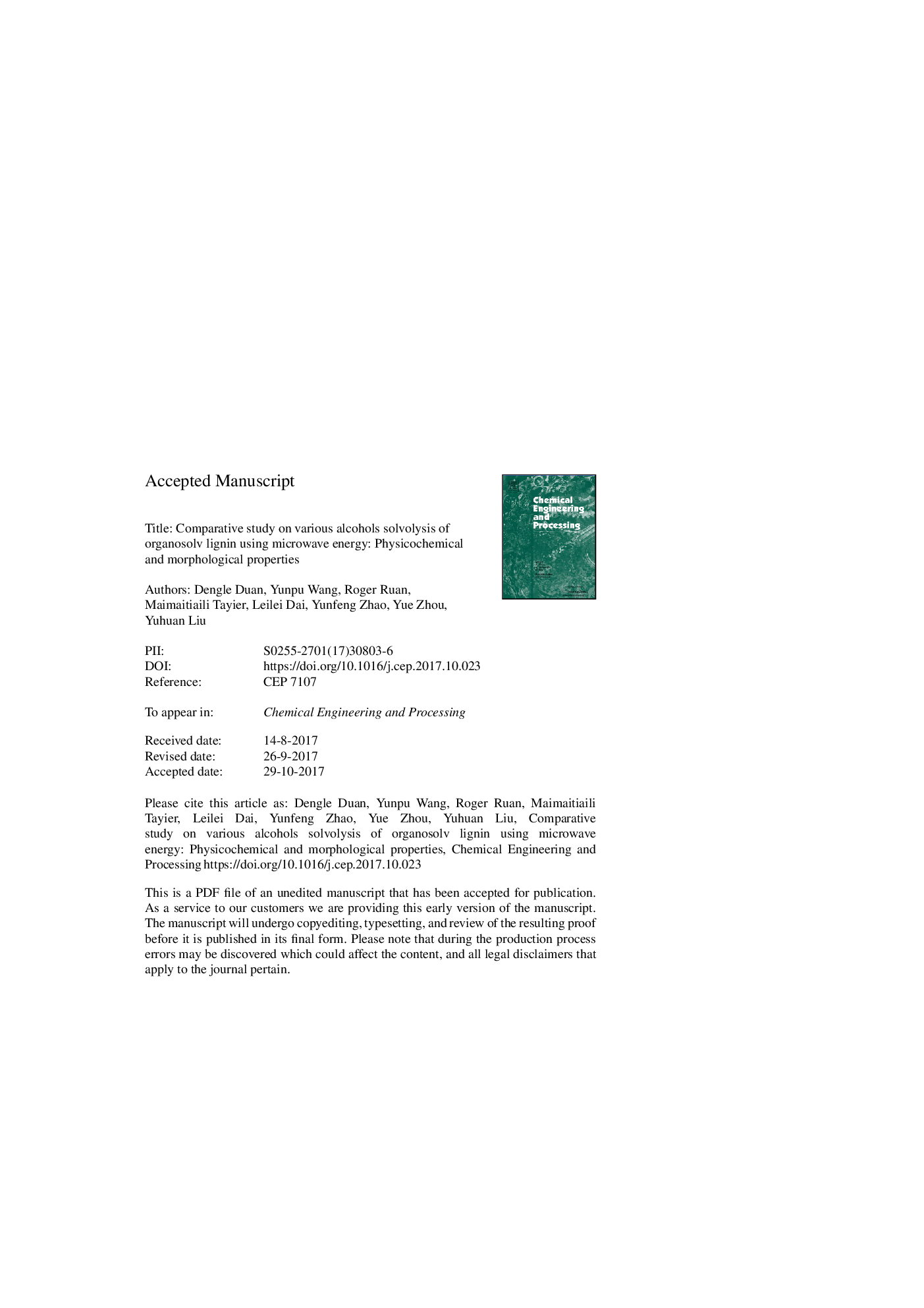| Article ID | Journal | Published Year | Pages | File Type |
|---|---|---|---|---|
| 7088648 | Chemical Engineering and Processing: Process Intensification | 2018 | 27 Pages |
Abstract
Solvolysis approach is an efficient pathway to covert solid biomass into different end products since it can provide a mild environment and a single-phase condition. A comparative study on various alcohols-assisted liquefaction of lignin has been carried out using sulfuric acid as catalyst under microwave condition. Methanol and ethanol showed a higher conversion rate compared to other alcohols. Both liquefied products and residues have been investigated using gel permeation chromatography-high-performance liquid chromatography (GPC-HPLC), Fourier transform infrared (FT-IR), Scanning electron microscopy (SEM) and Thermogravimetric (TG) analysis. The results showed that methanol and ethanol as solvents achieved a higher conversion rate, meantime, the molecular weight of liquefied products was dramatically lower than those of other alcohols. The FT-IR indicated that there were obvious differences in the contents of carbonyl, methyl and hydroxyl group in the liquefied products with various alcohols as solvents. The solid residue exhibited a big difference in microstructure morphology after depolymerization, in addition, the resulted solid residue from methanol solvents showed a higher thermal stability and char yield, which can be used as a fire retardant in composite materials.
Related Topics
Physical Sciences and Engineering
Chemical Engineering
Process Chemistry and Technology
Authors
Dengle Duan, Yunpu Wang, Roger Ruan, Maimaitiaili Tayier, Leilei Dai, Yunfeng Zhao, Yue Zhou, Yuhuan Liu,
